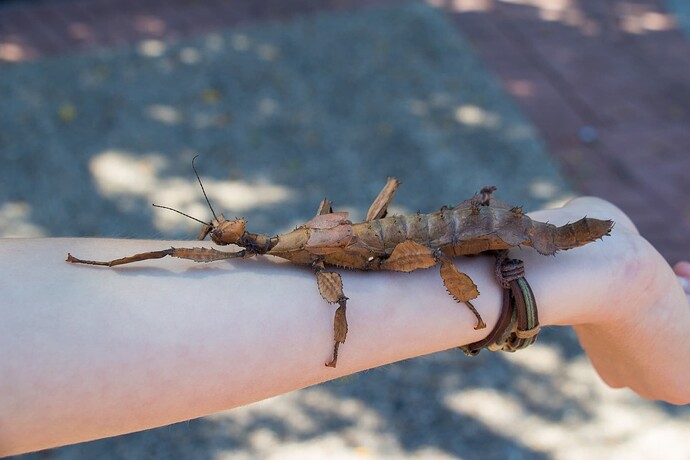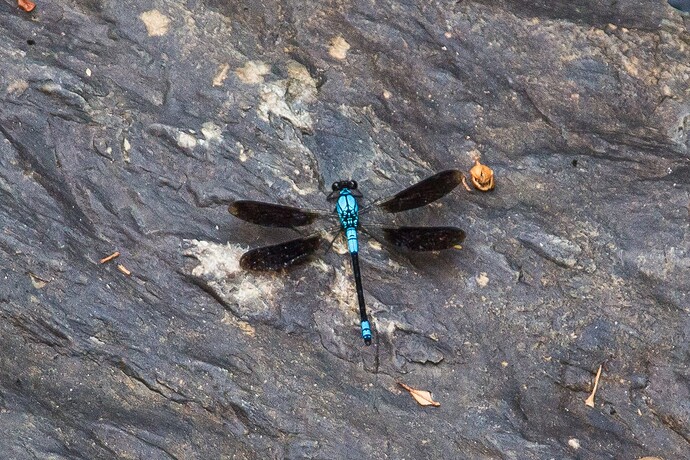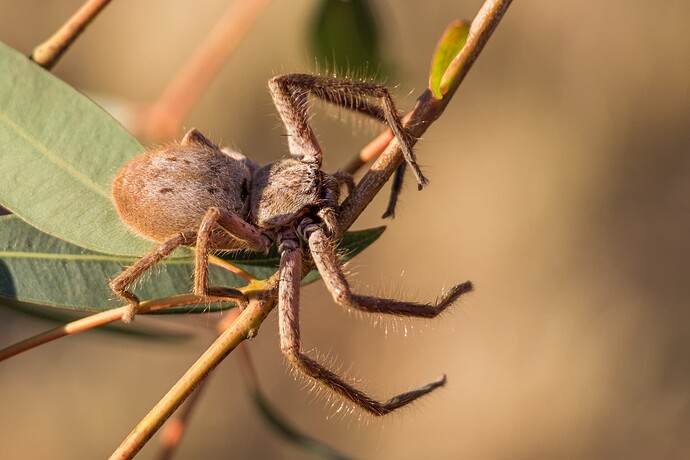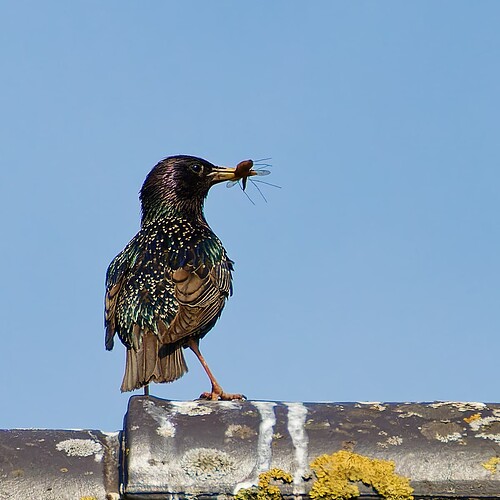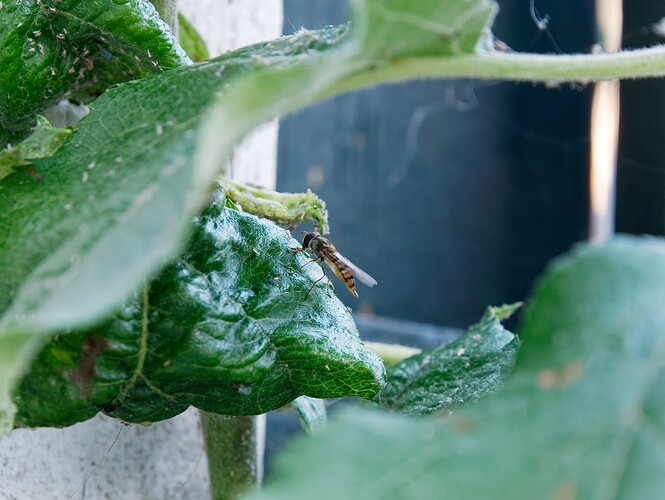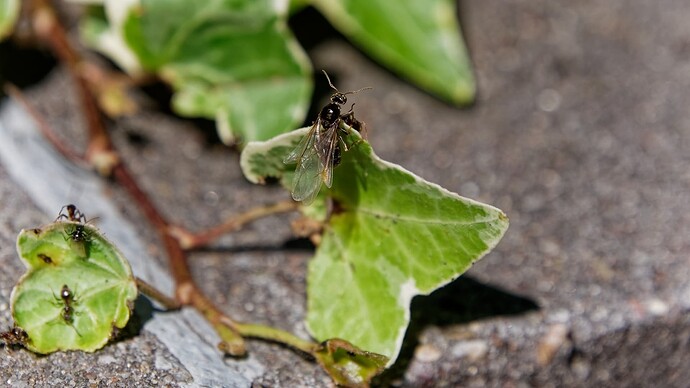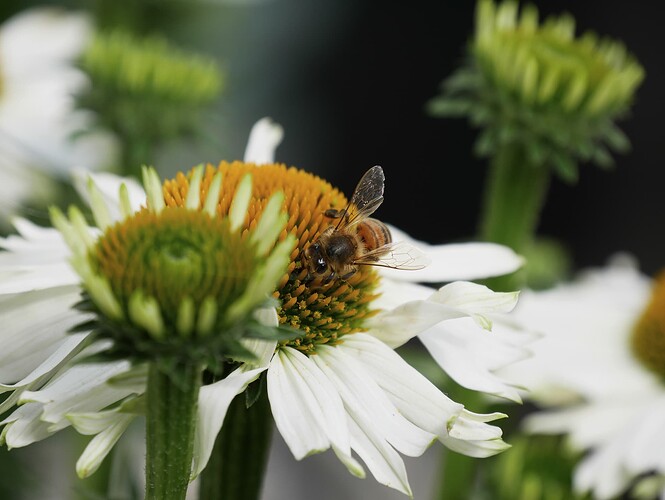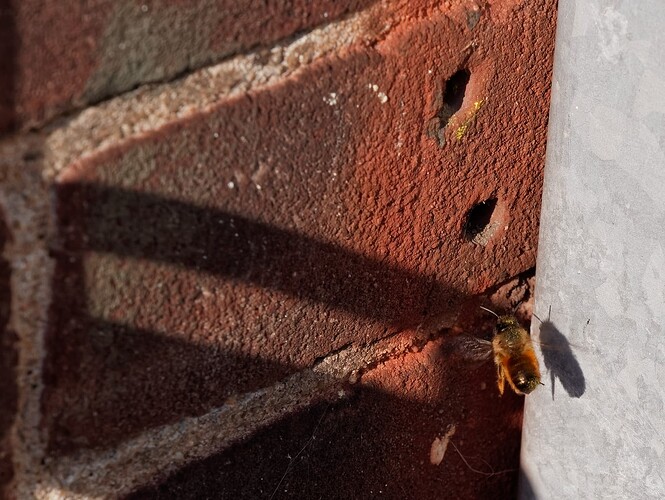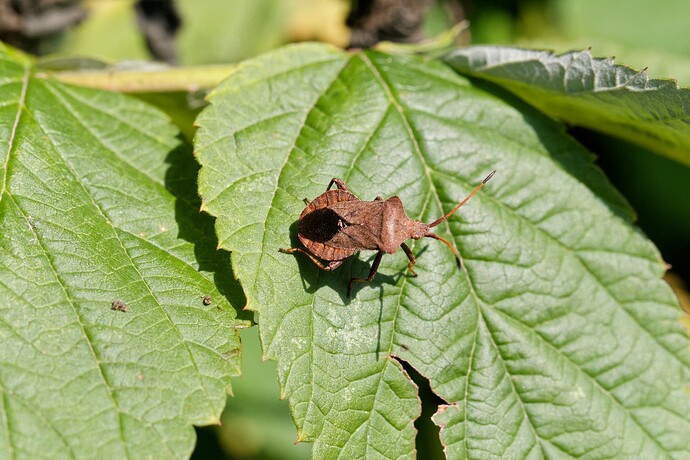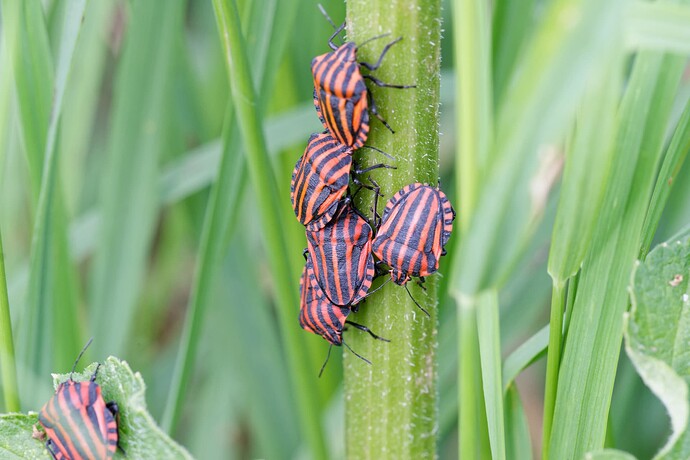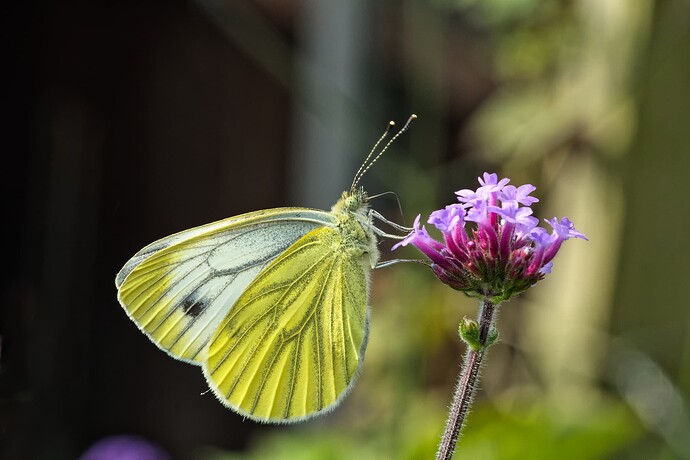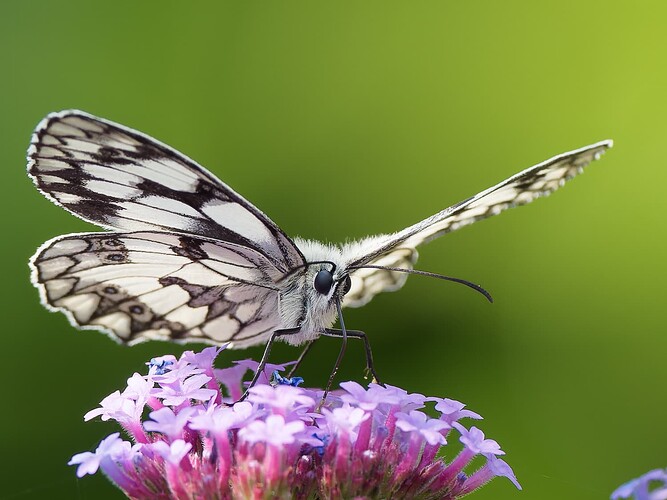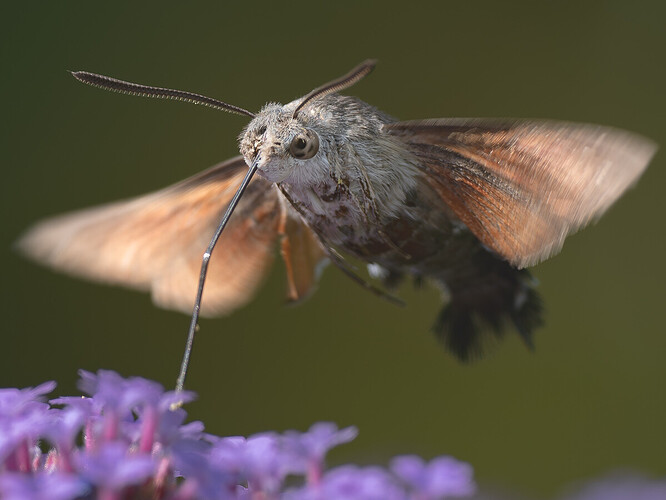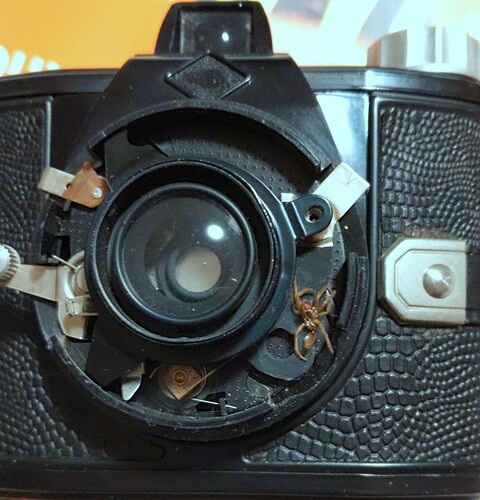Trouble with raynox 250 is DoF vs diffraction. I suspect f16 was out of question?
On a leaf focusstacking is also tricky because of movement of the leaf by wind or such.
But i would probably tried focusstacking anyway to get the hole dragonfly in focus. I have a handheld function in my g80. Works quite wel. Not full resolution. It’s 4k motionpictures and drawn out of that stills which are stacked internally.
Other option is manual stacking from burst of different focus points.
What a wonderful shot!?
At the time for me yes. But f8 was not intentional(can only speculate as to what I did accidentally). Sweet spot with this combination is f11.
blah, blah, blah...
DCR-250 also means (depending on focus) that things are only in focus about 10-12 cm in front of the lens - the first few weeks I had it, I could not get anything focused as I was not aware of it. Gear-goal for this year is a dedicated macro lens.
I do focus stack but then either with tripod or at a minimum if I can support at least on arm on something. Camera has focus stacking built in or I use the mobile app which allows manual focus steps. Have tried bursts for individual shots but I get better results just pressing the button myself at the right time (imagine a drunken Mr Miyagi trying to catch a fly - but succeeding).
Most of my macros are hand-held in awkward positions. Also don’t want to post the stacked ones as I’m obviously not stacking in PhotoLab and didn’t want the functionality discussions to spill over here.
don’t have a macro lens but have cheap Meike extenders and a 14-140mm f3.5-5.6 panasonic lens which can do this:
but i often just go with the flow and have fun :
with M43 f11 is fine, f16 got near(dropoff point , hanging in the abbis) visual diffraction, f20 isch is desperate. ![]()
This one of the coolest dragonfly damselflies photos I’ve seen.
EDIT: Damsels not dragons.
![]() pedant alert!
pedant alert!
It’s a photo of a pair of damselflies, not dragonflies.
![]()
Thanks. Corrected my post. There is a significant difference between them.
Identifying things I take photographs of is something I still need to learn.
No problem, there’s always a pedant around when you don’t want them ![]()
It’s an Olympus MFT sensor, the top two images were with the 300mm F4 lens, which gives an effective F8 aperture at F4 on MFT. The last one was the 60mm macro lens, shot also at F4. MFT is good for macro.
I always have a problem with these kinds of designations. To me, F-effective is nothing but the image distance.
Very nice pictures. What isso and shutter speed did you use? And is this a crop?
George
Well, I’m sorry but you are wrong.
The correct designation for aperture should be written as f/8 or f/4 and has nothing to do with distance - the “f” signifies the focal length of the lens.
When we use the expression “effective aperture”, what we are talking about is the 35mm full frame equivalent of an aperture used with a smaller or larger frame size.
e.g. the Olympus MFT sensor has a diagonal of 22.5mm, whereas a full frame sensor has a diagonal of 43mm. This means that the effective focal length of a full frame lens, on a MFT sensor is approximately doubled.
Therefore, because the focal length is doubled, you also need to halve the aperture divisor to get the same light level. Thus for a full frame aperture of f/8, this becomes f/4 for MFT.
The interesting side effect of this is, because you don’t need as long a focal length, the depth of field is vastly increased. MFTs are great for macro shots. Mind you, phone sensors are even smaller and, thus, give you a depth of field that is so great, it actually becomes a hindrance to creating limited DoF shots.
The lens formula. 1/focal length=1/subject distance+1/image distance. Image distance is the distance between the optical centre or nodal point and the sensor/film.
When focusing on infinity the image distance=focal length.
When focusing closer by, then the image distance is growing. Under normal circumstances this difference will not influence the dof much. Unless one is getting to macro. And here the effective f-nr is introduced. Normally the f-nr is calculated out of the focal length and the aperture opening but now it’s calculated out of image distance and aperture opening, f-effective.
By the way, Nikon makro lenses shows the corrected f-nr: the f-effective.
I meant based on the image distance and not the focal length.
George
As walkaround camera a m43 systemcamera is great.
There are good lenses available even fast one’s. Leica 35-100 f2.8 for instance.
Due the cropfactor 2 it’s easy to calculate focus equivelence and aperture equivelence.
One /two minor downfalls are less pixels, resolution, possible and the dual ios of 5 stops doesn’t cover motionblur so lowlight isn’t his playground.
(that’s why i use deepprime often ![]() )
)
